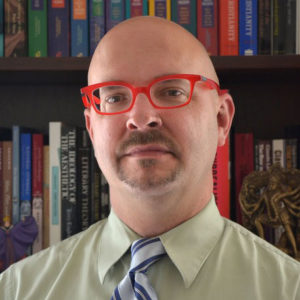
Ripped from Today’s Headlines
Over the past several years, there have been any number of events that have prompted professors to abandon their syllabi and lesson plans and create space for addressing events unfolding outside the walls of the classroom. This in-breaking of the contemporary, this pressure of the immediate, is often traumatic in nature. It frequently relates to histories of racism, nationalism, imperialism, xenophobia, misogyny, or homophobia. It may stem from global, national, community, or even campus contexts. Not all professors and students will feel the force of the blow in the same way. Addressing the affective, psychic, cognitive, and physical after-effects of our “shared” reality transpiring alongside course content poses any number of significant pedagogical challenges.
As much as current events may require a certain agility, presence, nimbleness, and attentiveness, I want to think instead about the pedagogical challenges of teaching course material that demand similar skills. What happens when one is teaching a topic that is still unfolding? In some ways, virtually anything taught in the religious studies classroom is still “live” in important ways: this, in fact, might be something that we are trying to get our students to understand. If I am teaching Hebrew Bible, I will have to grapple with the ways that Christian students read those texts because of what they’ve heard in church or Sunday school. If I am teaching about material religion, I will have to grapple with disputes around Confederate memorials, insofar as they are sites of sacred meaning—left or right—for many people. And, of course, if I am teaching about Islam or new religious movements, I will have to negotiate the complex and disparate motivations and (mis)understandings that prompt students to enroll in my classes.
But some topics, of course, are more alive than others. As I’ve mentioned in previous posts in this series, I recently taught a course on the Catholic sex abuse crisis and am scheduled to teach it again in the coming academic year. Although Church officials and apologists are invested in characterizing the crisis as something that is finished, resolved, and in the past, this is a polemical position, not one grounded in the evidence. New allegations of abuse surface on a weekly—if not daily—basis. New information about what bishops, cardinals, Vatican officials, including the Pope, knew, did, and failed to do surface with as much frequency. We continue to gain greater insight into the global scope of the scandal—both historically and contemporaneously. With every positive step forward—in terms of policy changes or the rhetoric of pronouncements—there are just as frequently significant strides backward. There are stories about study commissions, and institutional apologies, and advocacy groups, and the vagaries of each that continue to shape the crisis and its meanings. And, then, of course, there are the parallel stories of sexual abuse and misconduct as it has been practiced and ignored by a range of other institutions. When I was last teaching the course, I would always make sure and spend an hour prior to going to class to see whether some big story had broken since we last met that I needed to address in class. Sadly, the Internet in all its glory never failed to provide.
Although this ever-moving target of what I need to include in my course is anxiety provoking, there’s also a calming freedom in these circumstances. I don’t need to try and master the material because I can’t. This inability, on my and my students’ part, creates a very different classroom dynamic. I never had to come up with strategies and practices to encourage collaborative learning; I only had to pay attention to what we were trying to understand. We necessarily had to cooperate, to pool information, to treat each other as equal partners in our common endeavor. I was able to drop the weight of the fantasy of “coverage,” which let both me and my students slow down, breath a little, and reflect on the material in front of us more thoughtfully. And, of course, the attempt to understand—rather than the accomplished feat—is always at the forefront of everyone’s minds, underscoring the invaluable lesson that learning is a process and not an achievement.
While the Catholic sex abuse crisis—and some other topics—are obviously and keenly living animals that demand this kind of pedagogical attention, we can learn something from such material about how we might want to teach generally. What do you teach your students about that continues to grow and change, to influence and shape the contemporary moment? How can you attend to those features and dimensions to create a different experience of learning, conversation, and inquiry?
Leave a Reply